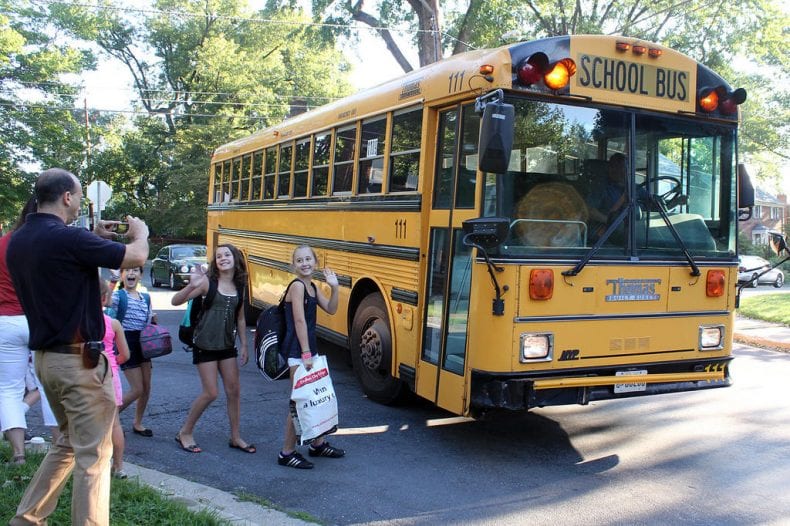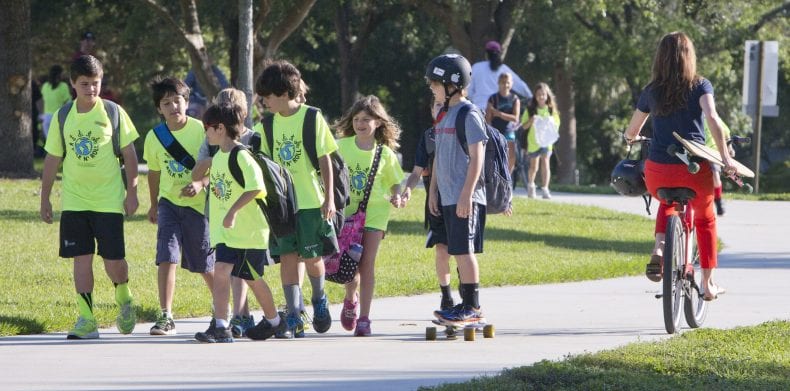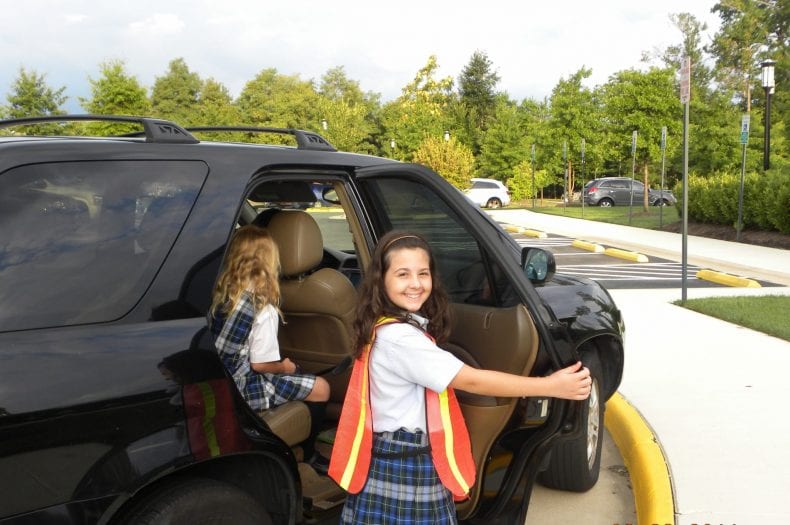If you’ve ever attempted to drive your kids to school in the morning, you’ll know that the rush-hour traffic can disrupt even the best-laid plans. In fact, it’s estimated that parents ferrying their kids to school accounts for between 10% and 14% of traffic during the morning commute, making it an increasingly unrealistic option for families.
Despite this, some parents continue to drive their kids to school on a daily basis, largely because they’re unsure of the alternative options that are available to them in the modern age.
But what exactly are these options? We’ll appraise the most viable below, while asking which ones are the most suitable for you.
The School Bus

Perhaps the most iconic transportation method is the so-called school bus, which is government funded and capable to taking kids en masse to their local Primary or Secondary schools.
However, the government has imposed huge funding cuts in the public transportation sector, creating a scenario where traditional school buses are scare and kids in rural areas are increasingly likely to miss out entirely.
A similar option has emerged in the form of bespoke and private minibus lease packages throughout the UK. Firms like Allied Fleet offer a wide range of vehicles for purchase, lease or hire, for example, enabling schools to invest in their own transportation at affordable prices.
These vehicles can hold up to 17 people and can be used for various purposes, from transporting kids to and from schools to enabling field trips.
Walking and Biking

Next up is the single most cost-effective solution, and one that eases the burden in terms of parent’s fuel costs and government spending.
Encouraging your children to walk or bike to school (either with or without your supervision) also delivers numerous health benefits, which is increasingly important in an age where there are a record number of primary school children leaving school severely obese.
This may or may not be viable depending on the distance between your house and your school, but the nature of catchment areas means that this should be a convenient option for most households.
It’s also important that you identify safe and manageable routes when walking and biking, as otherwise you may inadvertently put your child in danger as they make their way to school.
School Carpools

In the age of Uber, there’s no doubt that the concept of vehicle sharing is becoming increasingly popular in the UK.
At the same time, the notion of carpooling is also helping to reduce carbon emissions in the UK, while enabling people to reduce or share their fuel costs over time.
With school carpools, parents take it in turns to drive each other’s kids to school, with resources like GoKid making it easy to set up arrangements between neighbours or individuals who trust one another and make the same trip every single day.
In addition to reducing fuel costs and enabling parents to free up more time in their busy schedules, this also offers social benefits to kids as it enables them to make friends with other children at their school!









